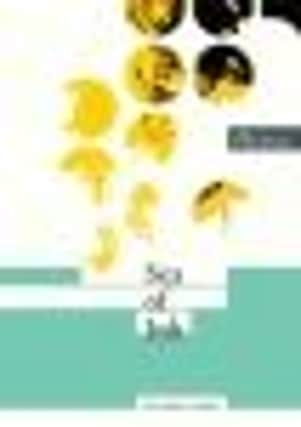Book review: Sea of Ink by Richard Weihe


Little is known of Shanren, the man, despite his legacy of 129 dated pictures and albums featuring exquisitely minimalist paintings and calligraphy, all executed with ink on paper.
Inspired by a single reproduction scroll painting given to him years ago, German author Richard Weihe has reinvigorated one of the most influential Chinese artists of all time and set him afloat on a ‘sea of ink.’
Advertisement
Hide AdAdvertisement
Hide AdThat journey is captured in a compelling, two-hour reading experience, a 106-page novella which paints a portrait of a life in 51 short chapters and sketches the soul of an artist through eleven of his breathtaking pictures.
Sea of Ink is a tale told in shades of light and darkness; it uses fact and fiction as its medium and enables one man’s personal history of determination and creativity to be played out against a framework of lost splendour, political savagery and spiritual awakening.
We meet Shanren, born Zhu Da, in 1626 when he is still a prince of the Ming dynasty, raised in a palace in Nanchang surrounded by wealth and privilege.
But when the old dynasty crumbles, he flees the Qing conquerors and takes refuge in a monastery, feigning madness to evade recognition. But his true calling is art and under the tutelage of the master Abbot Hongmin, Shanren becomes an artist, taking the new name ‘ba da shan ren,’ meaning ‘man on the mountain of the eight compass points.’
Advertisement
Hide AdAdvertisement
Hide AdHis goal is to capture the essence of nature with a single brushstroke, finding his inspiration in all forms of life, from the grandeur of a mountain to two rival spiders spinning a web of meaning across his simple canvas.
‘The first brushstroke is the foundation,’ he tells his pupils, ‘it is the internal law of the external movement.’
In Weihe’s capable hands, we witness the magical, physical creation of the paintings, the brush’s ‘gently winding movement,’ the bristles dripping with ink, the slow lifting of the artist’s arm and the spare brushstrokes that make up the whole.
Through each carefully balanced, descriptive, considered word and phrase, Weihe draws Shanren’s pictures, recreating with startling clarity an image that appears in literal line and form on the turn of the page.
Advertisement
Hide AdAdvertisement
Hide AdSea of Ink is a serene reading experience, an author and artist in perfect harmony, and all brought to fruition for English-speaking readers through the subtlety and fluidity of Jamie Bulloch’s superbly sympathetic translation.
Intriguing, elegant, awesome in its precision and uplifting in its sheer beauty, this is a book to read, enjoy... and then read again.
(Peirene, paperback, £10)